Delight, joy and exuberance are writ large on the faces of visitors to The Giant’s House garden in the French village of Akaroa, just outside Christchurch. It’s heart-warming, says its creator, artist/gardener Josie Martin.
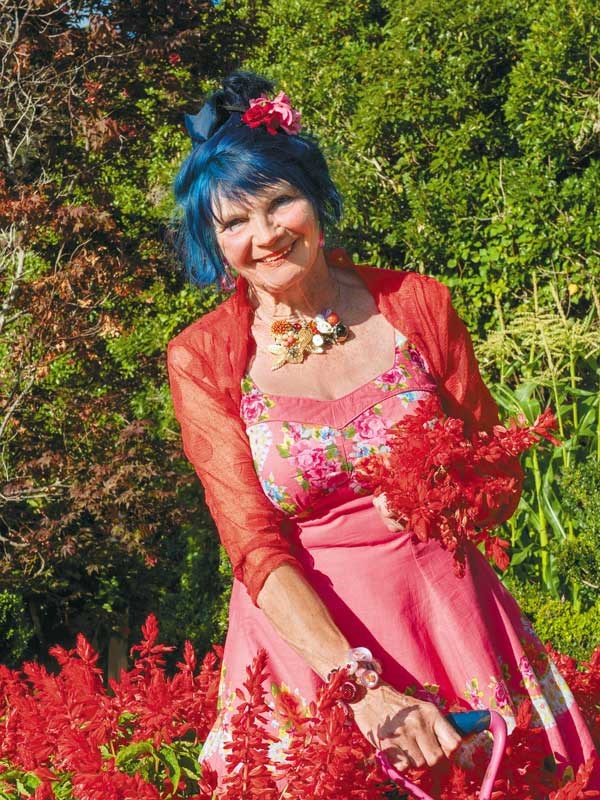 |
Josie Martin |
In fact, it’s her proudest achievement—transferring positive energy. The fact that people are smiling, dancing and singing makes her feel great, too. Quite often people are so moved they want to give her a hug; for most of them it seems to uplift their spirits.
‘It’s really wonderful if I’m doing something that I love that makes other people feel good.’ Put another way, Josie has perfected the art of growing happiness.
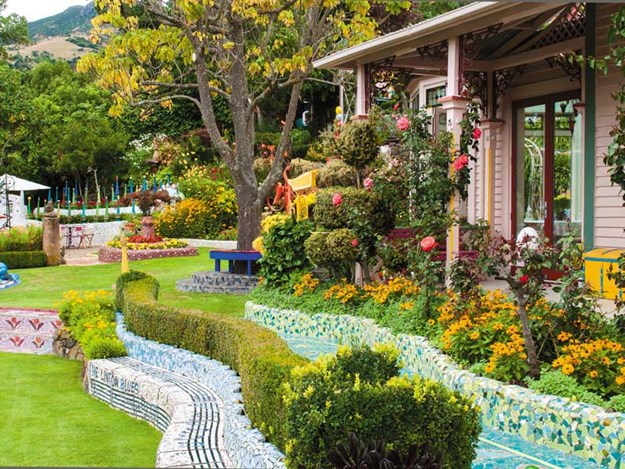 |
Colourful planting lives in happy harmony with madcap mosaics |
After a spate of earthquakes in Canterbury, battered and emotionally bruised people came to linger awhile. ‘People wanted to come to a happy place. That’s special. I think, “Gosh, did I do that?”’ And it’s not just locals queuing at the gate: passengers from cruise ships, tourists and travellers all make a beeline for her playful garden.
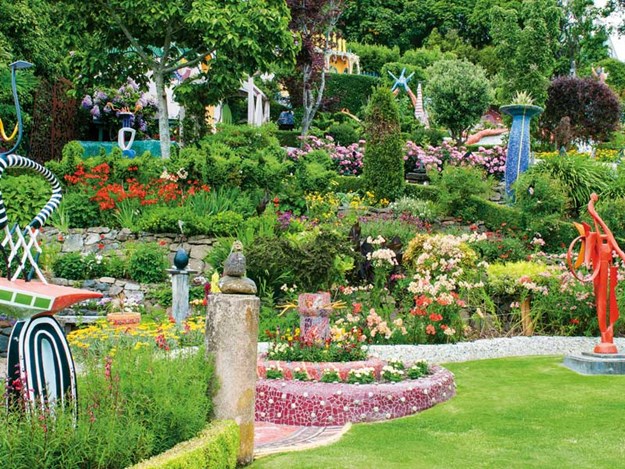 |
Josie’s world is inventive, intense, and supremely cheerful |
It’s hard not to get swept away once you’re inside Josie’s wonder world. Thanks to her mosaic artistry, it’s peopled with cavorting acrobats, a pirate ship, a wood pigeon big enough to sit inside, a larger-than-life Marcel Marceau leaning on fresh air, and the Nosey Parkers, to name a few.
And real flowers grow among them, climbing up bowers, filling out sculptures, glowing in the mixed border—not to forget the living statues of topiary. The real and surreal mix and mingle in one big happy garden party in the five-star garden of national significance.
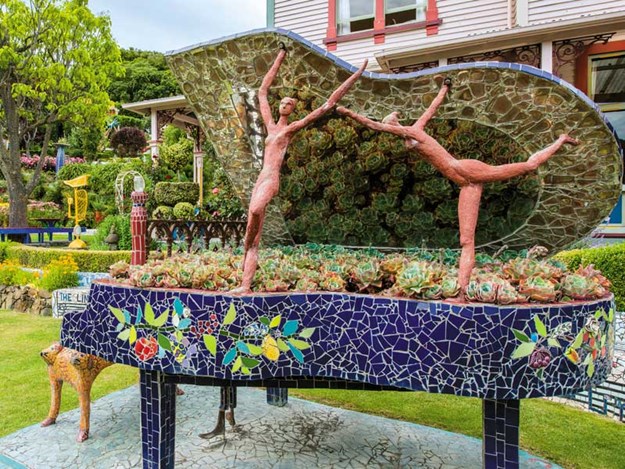 |
The grand piano ‘Sweet Patootie’ |
A grand piano on the front lawn is rarely without a would-be concert pianist hamming it up to music broadcast through hidden speakers connected to Josie’s iPad. The succulents under its lid shimmer in the sunshine. ‘People love the interaction,’ says its inventor.
Some sit there and play and sing along, especially French people for some reason. People dance and sing around it. Josie says she couldn’t have done this without her background in art and horticulture.
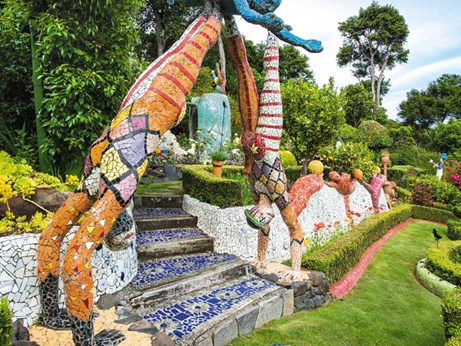 |
Cavorting acrobats by the lemon grove |
‘Besides, I’m a bit of a workaholic and garden and art are my passion.’ Everything you see in the garden now has gradually come together over 20 years, thanks to early morning gardening sessions before the gates open.
But Josie has always been driven. As a teenager, she worked a four-year apprenticeship at Wellington Botanic Garden while studying art at nights and weekends. She moved to Lincoln, where she continued her studies in horticulture, then grew cut flowers commercially for 16 years while raising three kids.
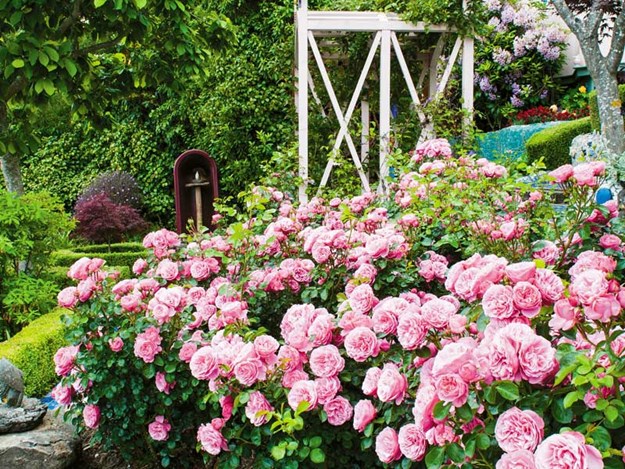 |
‘Leonardo da Vinci’ roses planted en masse |
‘It was pretty flat out,’ she says. ‘I had a big station wagon that I filled with flowers then had to get them to the airport by 8am. It was busy, but once the season ended I could paint the other three quarters of the year.’
Seasonal work suits her down to the ground. ‘But then I got a sore back and had to stop.’ You wouldn’t believe how heavy an armful of flowers can be, she says. She was devastated.
She searched for a small house with a big studio and found herself drawn to Akaroa, whose hills and coastal views recalled her childhood home of Wellington. ‘I love the European feel to the place, too.
I like being by the sea and Akaroa has a good climate. The soil I assumed would be okay because it’s volcanic.’ The rundown Victorian villa with good bones on Rue Balguerie that caught her eye was too big, but it had potential—and the walls would be fantastic for hanging paintings.
And for someone with an active imagination, this local legend about how the house got its name helped seal the deal. As Josie recounts in her book, The Giant’s House, ‘a little girl looked up in wonder at a grand house emerging from the bush above the settlement of Akaroa. “Giants live there,” she said.’
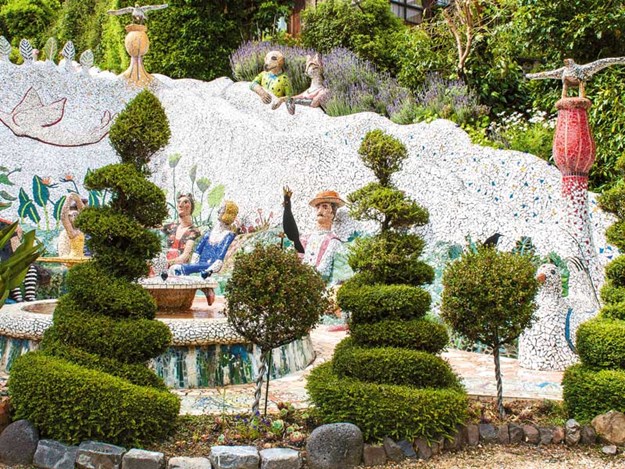 |
You’re never alone in the Place des Amis |
Restoring the house left her short of cash for the garden but yielded buried treasure in the form of broken china, which she kept for a rainy day. As for the design, she made endless working drawings to see how the garden would flow with the form of the land. She knew she wanted colour, and that she wanted to integrate art into the garden.
Planting began near the house, and the rest happened organically. Josie’s planting style is naturally unconventional—colour and texture, sweeps of succulents, natives and bright blooms, including a bank of 60 Coleonema ‘Sunset Gold’ above the mosaic clowns, are all swapped around frequently.
It’s pulled together by a soothing background of green lawns, shrubs and clipped hedges. Red poppies are mass-planted below a white wall of acrobats, and glossy black Aeonium arboreum ‘Schwarzkopf’ fill out a bed. Lashings of roses are either grouped in a single colour, mixed up in a patchwork of brights, or allowed to scramble over arbours.
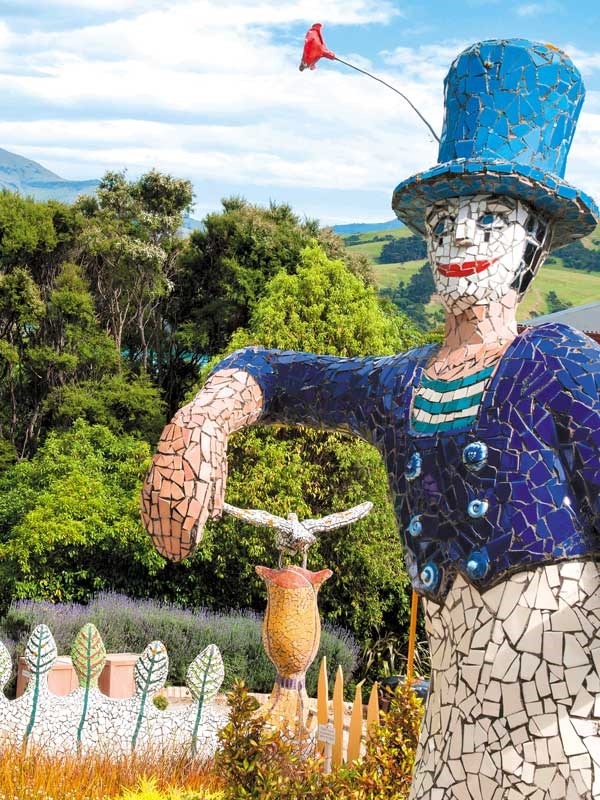 |
Marcel Marceau surveys the hills above Akaroa |
Plants and sculpture exist as equals. ‘I’ve been to a lot of sculpture gardens and felt they don’t usually have a great connection between the two. But by putting plants inside the sculpture it makes a soft transition.
The sculpture is not really an alien thing.’ Initially Josie used powder-coated steel, but she was frustrated when the colours faded. Then one day, while she was building a mosaic front step from that box of broken china, she realised that tiles keep their colour forever.
The answer: get more tiles. She couldn’t afford new, so she bought seconds, or rummaged and fossicked. And as word got out, boxes of tiles and china turned up at the gate, and people brought shards of precious china saved from quake-damaged homes.
Imagine their bittersweet joy when they return to see their once-lost family treasure reborn as art. Josie’s life is still seasonal: she works like mad in spring and summer in the garden, then in winter she goes overseas, travelling and painting.
Her kids are a major help, ‘my best supporters’. Josie says her garden is like her diary; characters she has met on her travels pop up in mosaic form, outbuildings are done up in the style of a country she’s visited. It’s all out there. And it’s all pretty happy.
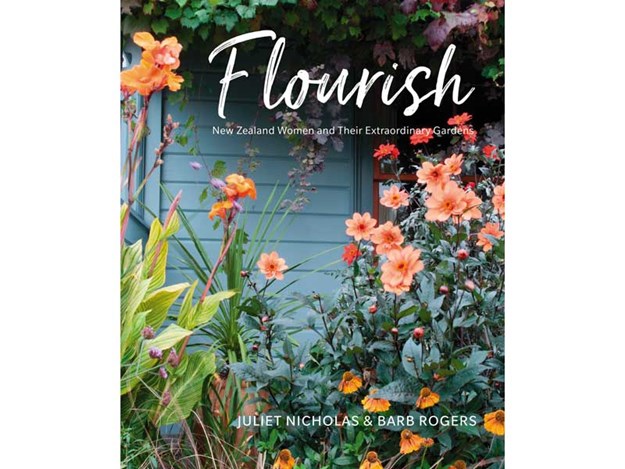 |
Extracted from Flourish: New Zealand Women and Their Extraordinary Gardens by Barb Rogers and Juliet Nicholas. Published by Godwit. RRP $55. Photography by Juliet Nicholas. |





